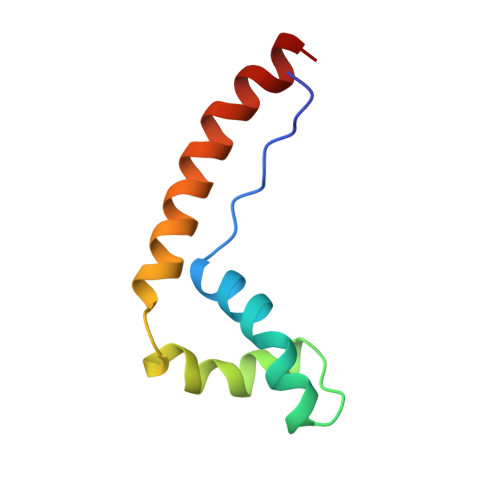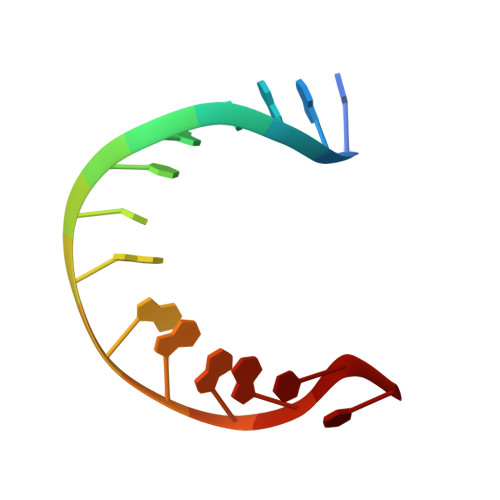Hmg-D Complexed to a Bulge DNA: An NMR Model
Cerdan, R., Payet, D., Yang, J.-C., Travers, A.A., Neuhaus, D.(2001) Protein Sci 10: 504
- PubMed: 11344319
- DOI: https://doi.org/10.1110/ps.35501
- Primary Citation of Related Structures:
1E7J - PubMed Abstract:
An NMR model is presented for the structure of HMG-D, one of the Drosophila counterparts of mammalian HMG1/2 proteins, bound to a particular distorted DNA structure, a dA(2) DNA bulge. The complex is in fast to intermediate exchange on the NMR chemical shift time scale and suffers substantial linebroadening for the majority of interfacial resonances. This essentially precludes determination of a high-resolution structure for the interface based on NMR data alone. However, by introducing a small number of additional constraints based on chemical shift and linewidth footprinting combined with analogies to known structures, an ensemble of model structures was generated using a computational strategy equivalent to that for a conventional NMR structure determination. We find that the base pair adjacent to the dA(2) bulge is not formed and that the protein recognizes this feature in forming the complex; intermolecular NOE enhancements are observed from the sidechain of Thr 33 to all four nucleotides of the DNA sequence step adjacent to the bulge. Our results form the first experimental demonstration that when binding to deformed DNA, non-sequence-specific HMG proteins recognize the junction between duplex and nonduplex DNA. Similarities and differences of the present structural model relative to other HMG-DNA complex structures are discussed.
Organizational Affiliation:
M.R.C. Laboratory of Molecular Biology, Cambridge CB2 2QH, UK.
















